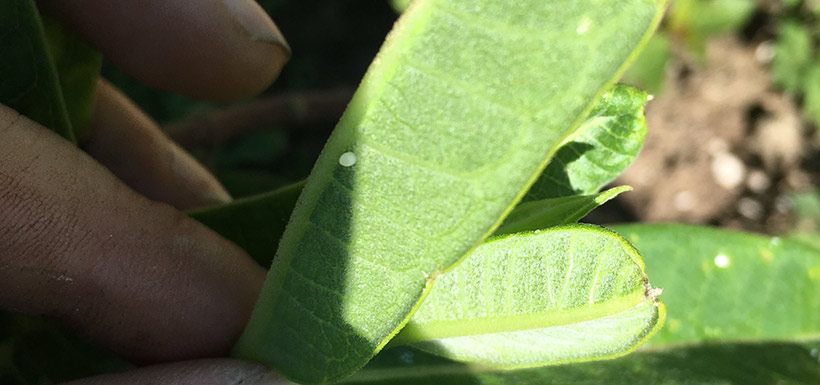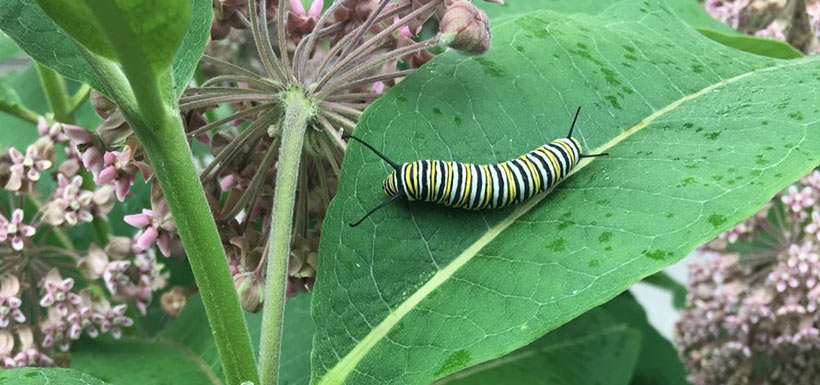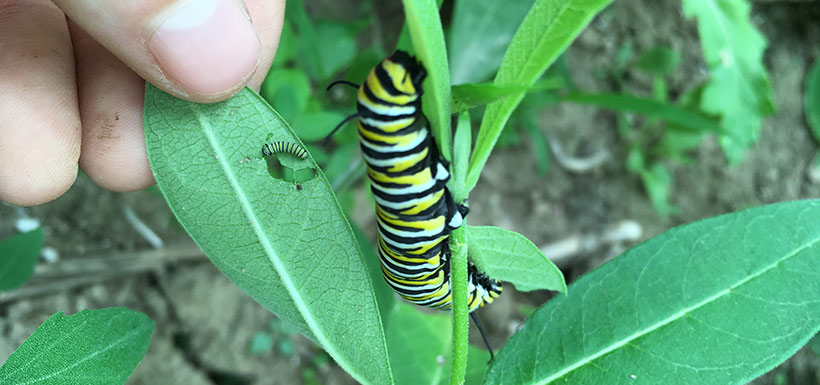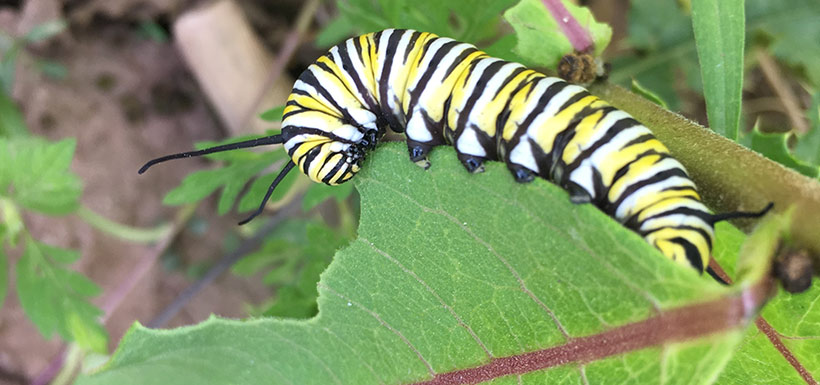Meeting my first monarch butterfly up close
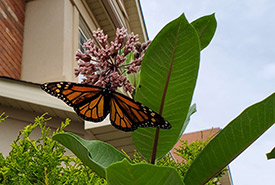
Monarch butterfly feeding on common milkweed flowers (Photo by Wendy Ho/NCC staff)
A gentle breeze blew on a mid-summer evening, the sky still lit from the setting sun. I set up my step stool along the edge of my driveway for some light weeding among my collection of plants in the front yard. It’s a chore that I don’t mind — I call it my decompression time, when I connect with nature and sometimes even strike up a conversation with my neighbours who are out for a stroll.
Just as I was diligently plucking bindweed shoots, I noticed an orangey shadow float by. I’d seen that insect many times on trails, and every time I take my camera out, it’s fluttered off into the distance. Brilliant orange wings fringed by a thick dark border, with white dots and dark veins along the wings make the monarch butterfly recognizable even to children (although not to be confused with viceroy butterflies). This time, one monarch decided my tiny yard was worthy of a visit. Why? Because I had planted something it liked.
I had heard a lot about the magnificent migration of this monarch butterfly population and its decline caused by the degradation of their habitat over the years. At the same time, I was just starting to give native plant gardening a try, despite having no prior gardening experience. I had tried to grow common milkweed from seed, but with no luck.
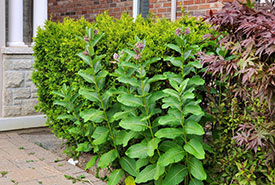
A few milkweed plants that have sprung up on their own (Photo by Wendy Ho/NCC staff)
It all started with one milkweed seedling
Milkweed is an important host plant for monarch butterflies. They lay their eggs only on this plant, and the leaves are the exclusive source of food for the caterpillars. But adult butterflies feed on a wide variety of other nectar sources. Almost any native plant with nectar will do, such as New England aster, blue vervain and wild bergamot. So in addition to growing milkweed in my garden, I attract monarchs with a variety of native plants that provide nectar.
Learn about why cold stratification is needed for some native plant seeds, and get tips on milkweed propagation >
But in the spring of 2021, a common milkweed seedling popped up out of nowhere at the edge of my garden strip. That stroke of luck precipitated my first encounter with this butterfly. Last summer, I only observed one tiny egg on the underside of a milkweed leaf, which later hatched into the tiniest caterpillar. I was thrilled but the excitement was short-lived as the caterpillar didn’t survive much longer. But check out these adorable caterpillar shots from my colleague:
I planted four more milkweeds late last summer, and this year four new milkweeds sprouted, totalling eight milkweeds in the yard. During that recent mid-summer evening, I paused to admire the butterfly seemingly dancing between milkweeds and pausing at the flowers. At times it struggled to fly when the breeze picked up.
I kneeled on the ground to watch for a while. Then I took my gardening gloves off and tried to position my phone for a few faraway shots and videos. The butterfly stuck around and visited the oldest milkweed and decided to stay there to feed. I crept closer and held my breath as I slowly stood up until I was eye level with the butterfly. I couldn’t believe I’d gotten this far without it flying off. Either it was too focussed on the nectar, or it realized my presence was not a threat.
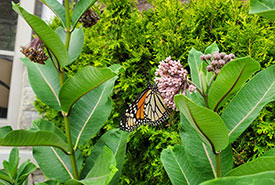
The first time I was able to get close to a monarch butterfly without it fluttering off (Photo by Wendy Ho/NCC staff)
And pushing my luck even more, I carefully lifted my arm to take photos without zooming in. The butterfly didn’t mind this looming metallic rectangle, less than the length of a juice box away. Perhaps my pressed flower phone case helped with camouflage?
I was busy snapping photos of the butterfly just as the new neighbours on the other side were moving in. I hope they didn’t think I was sneaking pictures of them! I’d happily introduce them to my array of native plants if we met again on the sidewalk. It would be wonderful if I could convince them to join in on growing some native plants on their property, which would expand this little oasis and potentially benefit even more pollinators, like monarch butterflies.
The next day, I found two monarch eggs on the plant. At the time, I knew there was a high chance they would get predated. In fact, a study estimated egg survival over the caterpillar life stage ranges from seven to 10 per cent. But I know that planting appropriate native plants local to my area is a small step in the right direction that will benefit not only monarch butterflies but other native pollinators.
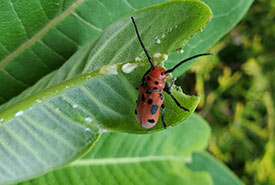
Red milkweed beetle (Photo by Wendy Ho/NCC staff)
Since then, I’ve observed milkweed beetles and common eastern bumble bees also enjoying those fragrant blooms that adorn the side of my driveway. I quietly mutter a thanks to them when I see them and welcome them to visit any time.
Would you like to support pollinators in your yard too? Learn more at the Nature Conservancy of Canada's Small Acts of Conservation >

